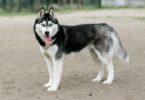What happens when you combine the charm of a lapdog with the boldness of a tiny watchdog? The result is a pint-sized companion bursting with personality—a designer hybrid that defies expectations.
This lively crossbreed blends the affectionate nature of one parent with the spirited confidence of the other. Often weighing under 12 pounds, these dogs pack loyalty, playfulness, and sass into their compact frames. Their expressive eyes and perky ears hint at the curiosity that drives their daily adventures.
Despite their small stature, they thrive as companions for city dwellers and families alike. With lifespans reaching 15 years, they form lasting bonds with owners who appreciate their mix of cuddles and cheekiness. Regular grooming and moderate exercise keep them healthy, while their adaptability makes them suited for various living spaces.
This article explores how to nurture their unique traits, from training strategies to coat maintenance. Discover why this rising-star hybrid continues to win hearts across the U.S.—and whether its blend of spunk and sweetness matches your lifestyle.
Breed History and Background
The story of this crossbreed begins with two distinct canine legacies spanning continents and centuries. One parent traces its roots to imperial China, where royal companions symbolized status and refinement. The other hails from ancient Mesoamerica, where small dogs held spiritual significance in pre-Columbian cultures.
Origins and Ancestry
Chinese royalty cherished their lapdogs for centuries, valuing their affectionate nature and regal appearance. Across the Pacific, the Techichi—a small canine revered by Toltec civilizations—served as both companion and spiritual guide. These ancestral lines merged in modern times when breeders sought to combine desirable traits from both parent breeds.
The Rise of the Hybrid
Designer dog enthusiasts began intentionally pairing these purebreds during the late 20th century’s surge in hybrid popularity. The goal? Create a compact companion with the loyalty of ancient Asian breeds and the spirited confidence of their Mexican counterparts. While not recognized by traditional kennel clubs, these hybrids gained traction through word-of-mouth praise from owners.
Modern breeders face unique challenges balancing genetic diversity with predictable traits. Some litters showcase dominant features from one parent breed, while others display surprising combinations of coat textures and facial structures. This variability contributes to their appeal among adopters seeking truly unique pets.
Distinct Physical Characteristics of the Shih Tzu Chihuahua Mix
This hybrid’s appearance delights owners with endless surprises. Standing 9–12 inches tall and weighing 9–16 pounds, these compact companions fit perfectly into urban lifestyles. Their sturdy legs and broad chests support energetic play while maintaining a portable size ideal for apartments.
Size, Weight, and Coat Types
Soft or sleek? Their coats vary dramatically. Some inherit short, glossy fur that requires minimal brushing. Others sport wavy, medium-length hair needing weekly grooming. Colors span classic black, creamy white, warm tan, and striking tri-color patterns.
Texture isn’t the only variable. Density ranges from the Chihuahua’s thin layer to the Shih Tzu’s plush double coat. Seasonal shedding occurs but stays manageable with regular care routines.
Variations in Appearance
No two pups look identical. Facial features might showcase a dainty muzzle or a subtle underbite. Ears can stand alert or flop playfully. Some dogs mirror one parent’s traits, while others blend both lineages seamlessly.
Body structure also differs. A few have the Shih Tzu’s rounded silhouette, while others lean toward the Chihuahua’s angular frame. This diversity makes each dog a one-of-a-kind companion, defying strict comparisons to established breeds.
Understanding the Shih Tzu Chihuahua Mix’s Temperament
Owners of this spirited hybrid often describe their pet as a bundle of contradictions—equal parts devoted companion and self-assured explorer. Their personality combines warmth with witty confidence, creating a dynamic that keeps families entertained and engaged.
Playful, Loyal, and Sassy Traits
These dogs form intense bonds with their favorite humans, often following them from room to room. Expect enthusiastic greetings when you return home and persistent requests for lap time. Their playful nature shines through during games of fetch or puzzle toy challenges.
While affectionate, the shichi maintains a cheeky independence. Training sessions might involve stubborn pauses or creative interpretations of commands. Positive reinforcement works best, as harsh methods can trigger their sensitive side.
Independent and Alert Behavior
Don’t let their size fool you—these watchdogs notice every delivery person and rustling leaf. Their alertness makes them excellent apartment guardians, though early socialization prevents excessive barking. Energy levels peak in short bursts, requiring multiple play sessions throughout the day.
Balancing cuddles with personal space is key. They’ll happily nap beside you but may retreat to a cozy corner when needing alone time. This blend of loyalty and self-reliance appeals to owners who appreciate both companionship and low-maintenance moments.
Caring for Your Shih Tzu Chihuahua Mix
Maintaining a happy, healthy companion requires tailored daily care strategies. These compact dogs thrive on predictable routines that balance activity with relaxation, ensuring they remain both physically fit and emotionally content.
Daily Routines and Exercise Needs
Start each day with two 15-minute walks to meet their moderate energy needs. Interactive play sessions—like fetch or hide-and-seek—add mental stimulation. Aim for 30 minutes of activity per day, split into morning and evening intervals.
Indoor enrichment matters too. Rotate puzzle toys weekly to prevent boredom. Designate a cozy corner with their bed and favorite chew items to create a safe retreat within your home.
Grooming, Brushing, and Bathing Tips
Shorter coats need brushing twice weekly, while longer fur requires daily attention. Use a slicker brush to prevent mats and distribute natural oils. Bathe every 3-4 weeks with oatmeal-based shampoo to maintain skin health.
Don’t overlook dental care. Brush teeth three times per week to combat common dental problems. Schedule annual vet checks to monitor oral health and catch issues early.
Consistency in these routines helps your pet feel secure. Involve the whole family in care tasks to strengthen bonds while keeping your furry friend thriving.
Training and Behavior Insights for a Shih Tzu Chihuahua Mix
Navigating the training journey of a feisty hybrid demands tailored approaches. Their sharp intelligence pairs with a playful stubbornness, requiring methods that balance structure with fun. Success lies in understanding their dual heritage—the desire to please meets a spirited independence.
Effective Obedience Training Strategies
Short bursts of practice work best—aim for 5-10 minute sessions. Use high-value treats like chicken bits to maintain focus. Start with basic commands like “sit” and “stay,” rewarding instantly for success.
Consistency matters. Use identical phrases each time to avoid confusion. If they lose attention, switch to a quick game before resuming. Early training during the puppy stage establishes lifelong habits, especially for family-friendly breeds adapting to home routines.
Managing Barking and Territorial Habits
Redirect excessive vocalization with puzzle toys or calm “quiet” commands. Create a designated safe space to reduce guarding behaviors. Socialization helps—expose them gradually to new sounds and visitors.
Positive reinforcement trumps scolding. Praise calm behavior when doorbells ring or strangers approach. Their alert nature makes them excellent watchdogs, but boundaries prevent overprotectiveness. Pair patience with clear expectations for lasting results.
Health Concerns and Lifespan Overview
Understanding potential health risks helps owners safeguard their pet’s well-being. These energetic companions typically enjoy 12-15 years of life with proper care. Their longevity depends on managing inherited vulnerabilities while maintaining preventive routines.
Common Inherited Health Issues
Several genetic conditions may affect these small dogs. Luxating patella (knee joint instability) and dental crowding appear frequently. Brachycephalic features from their flat-faced ancestry can lead to breathing difficulties during exercise or hot weather.
Eye problems like progressive retinal atrophy and allergies also rank among typical concerns. Regular vet visits help detect issues early, especially collapsed trachea symptoms or liver complications. Owners should watch for excessive scratching, wheezing, or reluctance to chew hard toys.
Preventive Care and Regular Vet Visits
Bi-annual checkups catch developing health conditions before they escalate. Vets recommend dental cleanings every 6-12 months to prevent tooth loss. Daily teeth brushing at home reduces plaque buildup between professional care.
Balanced nutrition supports joint health and weight management—crucial for preventing patellar luxation. Moderate exercise maintains muscle tone without straining their compact frames. Tracking behavioral changes proves vital, as these dogs often hide discomfort until conditions advance.
Proactive owners extend their pet’s healthy years through vigilance and partnership with trusted veterinarians. Early intervention transforms manageable health issues into minor setbacks rather than lifelong challenges.
Feeding and Nutritional Guidelines
Tailoring nutrition to a compact canine’s needs ensures vitality and longevity. These energetic companions require carefully measured meals that fuel their fast metabolism while preventing weight gain—a delicate balance demanding informed choices.
Balanced Diet and Meal Portions
Small breeds thrive on nutrient-dense kibble formulated for high energy needs. Split daily food into 3-4 meals to stabilize blood sugar and prevent overeating. Adults typically need ¼–½ cup daily, adjusted for activity and age. Use a kitchen scale for accuracy—eyeballing portions often leads to obesity.
Dry food supports dental health, while wet options boost hydration. Watch for signs of food sensitivities: itchy skin or digestive issues may signal ingredient intolerances. Rotate proteins like chicken or salmon to diversify nutrients and reduce allergy risks.
Senior dogs benefit from reduced-calorie formulas with joint-supporting supplements. Puppies need frequent meals—up to four daily—to support growth. Always transition foods gradually over 7-10 days to avoid stomach issues. For long-haired varieties, omega-rich diets enhance coat shine and skin health.
Consult your vet to customize portions based on body condition scores. Remember: quality trumps quantity. Premium foods with lean proteins and whole grains deliver sustained energy without empty calories.
Social Interaction: Kids, Pets, and Home Environment
Creating harmony between compact companions and busy households requires intentional strategies. These petite dogs flourish when introduced gradually to new faces and environments, blending their natural curiosity with inherited caution.
Building Trust Through Gradual Introductions
First meetings with children should involve calm voices and gentle touches. Teach kids to sit on the floor during initial interactions, letting the dog approach when ready. Always supervise play sessions to prevent accidental rough handling.
When introducing other pets, use baby gates for controlled visual access. Start with short, positive encounters—treats on both sides of the barrier work wonders. Gradually increase exposure times as comfort levels improve.
Cultivating Confidence in Daily Life
Early socialization shapes a dog’s worldview. Introduce various sounds, textures, and friendly strangers during puppyhood. Pair novel experiences with praise and rewards to build positive associations.
Establish predictable routines for feeding and playtime. Create safe retreat spaces where the dog can unwind after stimulating activities. Involve all family members in care tasks to reinforce trust and belonging.
Patience proves essential during adjustment phases. Some dogs may need weeks to acclimate to bustling homes. Celebrate progress through consistent encouragement, allowing their spirited personality to shine through secure relationships.
Final Reflections on Embracing a Shih Tzu Chihuahua Mix
Embracing this spirited companion brings a unique blend of joy and lively companionship to any home. Their compact size and adaptable nature make them ideal for apartments or houses, thriving where love and attention abound. By merging traits from both parent breeds, these hybrids offer a delightful mix of playfulness and loyalty that captivates families.
Owners who invest time in proper training and consistent care reap lasting rewards. Regular grooming, balanced nutrition, and early socialization shape a well-adjusted pup ready for life’s adventures. Though small in stature, their big personalities fill homes with laughter and affection.
Choosing this toy hybrid means welcoming a devoted friend who adapts to your rhythm while adding their own spark. Their ability to bond deeply with owners—whether in bustling cities or quiet suburbs—showcases their versatility. With patience and understanding, you’ll nurture a relationship built on mutual trust and endless tail wags.
Ultimately, these charming companions prove that great things come in small packages. Their presence transforms ordinary moments into shared memories, celebrating the unique magic only a well-loved pet can bring.
FAQ
How long do these hybrids typically live?
With proper care, they often live 12–16 years. Regular vet checkups, a balanced diet, and dental care help maximize their lifespan by addressing common issues like heart murmurs early.
Are they suitable for apartment living?
Yes, their small size (7–12 lbs) and moderate energy make them ideal for smaller spaces. Daily walks and interactive playtime meet their exercise needs without requiring large yards.
Do they shed a lot?
Shedding varies based on coat type. Wavy or curly fur from the Shih Tzu parent may shed less, while shorter coats from the Chihuahua side shed moderately. Weekly brushing minimizes loose hair.
Are they prone to separation anxiety?
Yes, their loyal nature can lead to stress when left alone. Crate training, puzzle toys, and gradual alone-time practice help reduce clinginess and destructive behaviors.










Leave a Comment